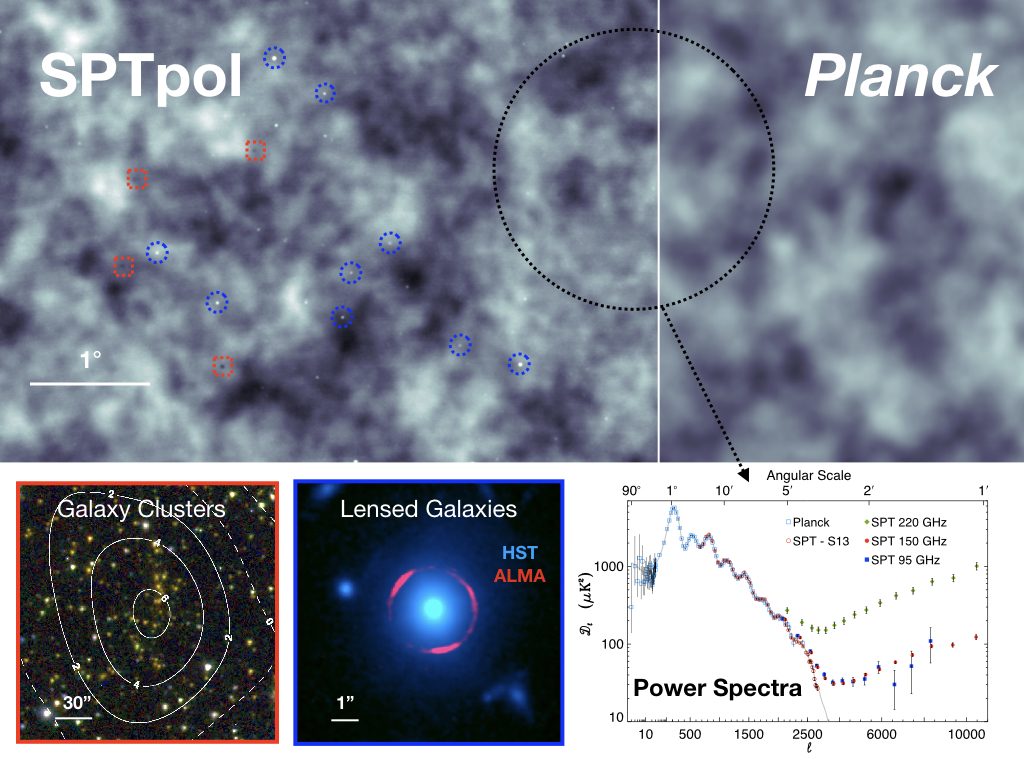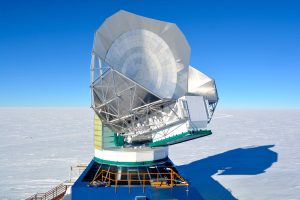South Pole Telescope – 3G
The cosmic microwave background (CMB) provides a snapshot of the universe at a time only 380,000 years after the Big Bang. The well-understood dynamics of the CMB enable precise calculation of its observable features, and directly connect new measurements to fundamental physics. These properties are what makes the CMB one of the most powerful pieces of evidence that we live in a geometrically flat universe, dominated by non-baryonic cold dark matter and dark energy, with large-scale structure having grown through gravitational instability seeded by quantum fluctuations from an earlier inflationary epoch. The next frontier of CMB research is to extract the wealth of cosmological information available from its polarization.
CMB observations have always been a sensitivity-limited field of research; advances in detector technology have proceeded hand-in-hand with scientific discovery. Over the last 20 years, CMB detector development has focused on making ever-larger arrays of detectors. Stage-II experiments are currently observing with O(1000 ) detectors, Stage-III experiments are currently under development with O(10,000) detectors, and a Stage-IV experiment (CMB-S4) having at least 100,000 detectors. Towards this goal, scientists at Fermilab have partnered with other national laboratories and university partners, to develop scalable arrays of superconducting transition-edge sensor (TES) detectors for future CMB experiments (see Figure 1), which led to the deployment of the 16,000 detector SPT-3G camera which was installed on the South Pole Telescope (SPT) in 2017.
Scientists at Fermilab also have a major role in the 10-meter South Pole Telescope (SPT, see Figure 3), and the development and operations of its third-generation camera, SPT-3G. In February 2018, the SPT-3G camera began a 6-year 1500 square degree survey which will produce measurements with an unprecedented combination of depth (∼2 μK- arcmin in temperature at 150 GHz), resolution (∼1 arcmin), and sky coverage. This unique data set will enable broad and impactful science, from sensitive constraints on inflationary models to the formation and evolution of galaxies (see Figure 2).
The SPT-3G and CMB-S4 experiments have scientific goals that aim to answer some of the most exciting questions in cosmology and that are at the heart of the high-energy physics mission: to constrain inflationary physics at grand-unified theory energy scales (~1e16 GeV), to measure the sum of the neutrino masses at a level below the minimum mass expected from neutrino oscillations (<0.06 eV), and to precisely constrain the relativistic energy density of the universe and any “dark radiation” component.
Videos
Team Members
- Adam Anderson
- Bradford Benson
- Michelle Jonas
- Donna Kubik
- Hogan Nguyen
- Alexandra Rahlin












